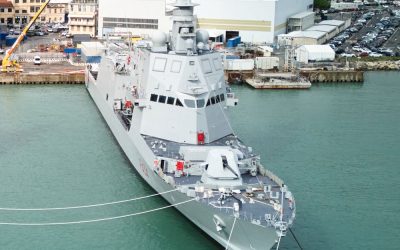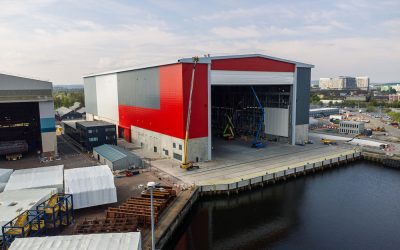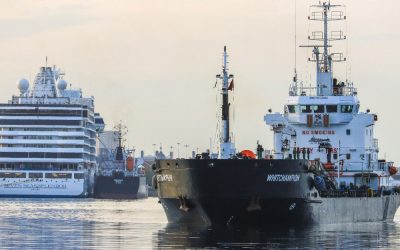By Ulrik Dan Frørup, chief commercial director, Bureau Veritas Marine & Offshore
When it comes to the fuels used to propel ships, the onesize-fits-all days are over. Shipping is inevitably moving towards a new era where multiple fuel options will coexist, at least in the short and medium term. Navigating this new landscape will require information sharing and flexible thinking.
The world is urgently in need of action to reduce greenhouse gas emissions, as the impacts of climate change is hitting communities with unprecedented floods, droughts, heatwaves and fires. Shipping, which accounts for nearly 3% of all carbon emitted worldwide, has been singled out a sector where drastic and immediate change is needed.
The encouraging news is that action is already taking place within the sector. A growing number of shipowners, charterers, shipyards and investors are well aware of the importance of reducing their emissions, and are taking steps to tackle the climate crisis. Across the globe, we are seeing maritime stakeholders working together to develop innovative solutions to decarbonise the sector, from clean technologies that improve energy efficiency to alternative fuels such as hydrogen or ammonia.
There is no doubt that a key part of the equation to decarbonise shipping in the long term will rely on the development of new fuels, but this cannot be done overnight. Developing the engines and technologies required to use ammonia or hydrogen as fuel is a complex process. Scaling up these innovations so they can safely propel the 50,000+ merchant ships that currently trade on the world’s oceans will require time.
Setting up the supply chains that will allow vessels to refuel along international shipping routes is another challenge that will involve multiple actors and moving parts. The reality is that carbon-free fuels may not be fully deployed until 10, 15 or even 20 years from now. Furthermore, the production of alternative fuels is likely to be very costly compared to the fossil fuels used today. In other words, to this day, there is no silver bullet, or no single alternative fuel system that is ready to deploy on a wide enough scale to singlehandedly decarbonise shipping.
Towards a multi-fuels world
Instead, we are likely to see a variety of alternative fuels coexist in the next few decades. Existing vessels may be retrofitted to dual fuel (bio-fuel/-gas), and new smallmedium sized ships may be battery powered based on bio-fuel and hydrogen as fuel, whereas many green seas / large vessels will wait for ammonia propulsion to gradually enter into service. All these will require bunkering infrastructure to take shape. While the ultimate goal must be to go completely carbon-free, intermediate solutions such as biofuels and biogas will play an important transitionary role and they could potentially be further developed to represent an almost fully carbon neutral solution. In other words, we are entering an inevitable transition phase where multiple fuels and supply networks will coexist, and we need to accept that there is no single pathway in the short and medium term – with different solutions being deployed depending on the regions and ship types.
It is probable that one fuel will establish itself as the new norm across shipping, but with many options still in their infancy, it is too early to tell which one will come to dominate markets in the long term. Meanwhile, a ‘wait-and-see’ approach is untenable, given the urgency of the climate crisis and the tighter regulations on emissions that were recently put forward by both the IMO and the EU.
In this context, the industry’s most important asset will be information and international collaboration, which will support both innovation and decision-making – and this is where classification societies like Bureau Veritas can play a key role. Our expertise and knowledge on developing comprehensive technical guidelines and Rules for seagoing vessels, combined with our close collaboration with engine manufacturers, has allowed us to issue Rules for all main alternative fuels. This includes our new ammonia-prepared notation, which certifies that a ship has been designed and constructed to later be converted to use ammonia as fuel.
These rules make safe innovation possible, by guiding shipowners, shipyards and technology providers on the safe use and carriage of new fuels, with specific rules to mitigate risks linked to flammability and toxicity, for example. Moreover, our neutral position enables us to provide insights and information that support the key decisions facing ship owners and operators, without advocating for any fuel in particular, not least because the optimal solution for each owner may be different, depending on their business, their vessels and their trading routes.
A dual focus
Shipping is fighting two simultaneous battles. In addition to substantial efforts towards the long-term green transformation of the energy supplies used to power ships, it needs to show significant progress now, through immediate pragmatic actions that will reduce emissions in a way that is tangible and verifiable.
This is why, as we move towards a new fuel landscape, priority must also be given to short-term action that will curb the need for energy in the maritime sector. This can be achieved by improving the energy efficiency of ships through better routeing and digitalisation, as well as through clean technologies such as wind propulsion, air lubrication or hull coatings. Regardless of the fuels that will be used in the future, being more energy efficient will be an advantage. Maritime stakeholders will need to show flexible thinking, accepting that multiple solutions might be needed to decarbonise their fleets and that innovation in the short and in the long term can work hand-in-hand.
Regulators must also play their part, by putting in place incentives to encourage companies to become first movers and innovate, including through green financing. This will require political support and the willingness to invest in solutions for the wider supply chains. After all, shipping transports around 90% of the world’s goods. Shipping may not have the highest public profile, but all of our societies and economies around the globe have a direct stake in supporting our sector’s efforts to curb our carbon emissions.
The challenge is major, but pessimism must not be allowed, given the scale and breadth of the actions and commitment that we have seen from the industry in the past three years or so. The maritime sector has come a long way already and is now embracing a major transformation that will see us make a significant and necessary contribution to global decarbonisation. At BV we are there to support this sustainability journey.






